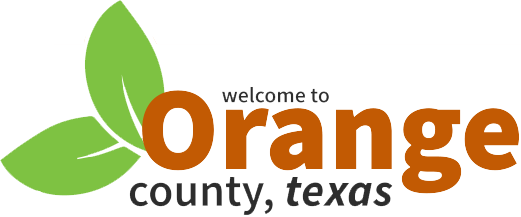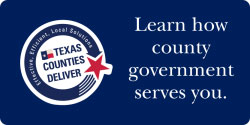Flying Drones Near Airports
 The FAA Modernization and Reauthorization Act of 2012 made it a requirement for hobbyist drone operators to contact the airport and the air traffic control tower, if one is on the airfield, when operating within five (5) miles of an airport. The notification requirement, now codified under 14 CFR Part 101, Subpart E, provides an opportunity for unsafe drone operations to be disapproved. Making contact with the airport and/or air traffic controller also provides an opportunity for manned aircraft to have greater awareness of drone operations.
The FAA Modernization and Reauthorization Act of 2012 made it a requirement for hobbyist drone operators to contact the airport and the air traffic control tower, if one is on the airfield, when operating within five (5) miles of an airport. The notification requirement, now codified under 14 CFR Part 101, Subpart E, provides an opportunity for unsafe drone operations to be disapproved. Making contact with the airport and/or air traffic controller also provides an opportunity for manned aircraft to have greater awareness of drone operations.
Who qualifies as a hobbyist
All of the following requirements must be met to qualify as a hobbyist drone operator:
- The aircraft is flown strictly for hobby or recreational use.
- The aircraft operates in accordance with a community-based set of safety guidelines and within the programming of a nationwide community-based organization (CBO).
- The aircraft weight is limited to not more than 55 pounds, unless otherwise certified through a design, construction, inspection, flight test, and operational safety program administered by a CBO.
- The aircraft operates in a manner that does not interfere with, and gives way to, any manned aircraft. The FAA has stated it will take enforcement action against pilots who operate in an unsafe manner.
- When flown within five (5) miles of an airport, the operator of the drone provides the airport supervisor or the airport traffic control tower (when an air traffic facility is located at the airport) with prior notice of the operation. Drone operators flying from a permanent location within five (5) miles of an airport should establish a mutually agreed upon operating procedure with the airport manager or the air traffic control tower.
- You must obtain a remote pilot certificate with a small unmanned aircraft systems (UAS) rating and comply with 14 CFR Part 107 if you do not meet each of these five requirements and your aircraft weighs less than 55 pounds.
Determining Whether Your Location Is Legal For Flight And Near An Airport
Drone operators should always determine where the closest airports are to decide if notification is required. Drone operators should also be aware of where manned aircraft may be operating and must also be familiar with other locations where drone operations are prohibited. The following methods can be used to find out where the nearest airports are and if your location is legal:
- Operators can use the FAA's B4UFLY application for free by downloading it from the App Store for Apple devices or from Google for Android devices. The app will plot your position on a map and graphically show your distance to nearby airports. If multiple airports are within the five (5) mile operating area, it is your responsibility to contact all airports.
- Other websites such as the Smithsonian's or the FAA's offer free maps that show the locations of airports and restricted airspace.
- Drone operators should also check for temporary flight restrictions (TFRs) before flying. These notices normally include language prohibiting unmanned aircraft operations. The FAA provides a website that shows current TFRs on a map.
Contacting The Airport
If you determine your location is legal for drone operations but is within five (5) miles of an airport, you must contact the airport.
The airport will be interested in the following information:
- Where you will be operating - address or latitude/longitude
- The altitudes at which you will be flying - operations are not to exceed 400 feet above ground level
- What type of flying activity you will be doing
- The number of aircraft and a basic description of the aircraft
- When operations will begin and how long they will last
- Your name and a contact number
The airport may not say the drone operation is approved, but all that is required is notification for drone operations to take place. If the airport says the operation may be unsafe or that they disapprove the operation, you should fly in another location where you do not need the airport's approval or where the airport states would be acceptable. The FAA has stated that the agency "would consider flying model aircraft over the objections of FAA air traffic or airport operators to be endangering the safety of the NAS." Additionally, the FAA may take enforcement action against a drone pilot who has an FAA-issued certificate, such as a private pilot certificate.
Contacting Air Traffic Control
The best way to find out if an airport has an air traffic control tower on the airfield is to contact the airport and ask. If there is, the airport will be able to supply you with the phone number for the air traffic control tower. Always call ahead as airport personnel are not normally available 24 hours a day and usually have many responsibilities.
Air traffic control is responsible for collecting the following information:
- Geographic location and operating area dimensions
- Altitude at which operation will be conducted - operations are not to exceed 400 feet above ground level
- The number of drones and operators
- The time and duration of activity
- Method to determine when the activity will begin and end
- Real time contact for required communications
Current FAA guidance states that "when notified of a model aircraft operation, the air traffic control manager or airport management may deny operations if they impact the safety of other operations at the airport. Specific reasons for the objection should be provided to the person by the Air Traffic Control Tower or airport manager at the time of the request and documented." The FAA requires controllers to record any drone activity and any operational issues that it may cause.
Long Term Drone Operations Near An Airport
If flying near or on an airport on a long term basis is desired, the FAA recommends formulating a letter of agreement to establish the procedures and reduce the workload for the airport manager or the traffic control tower and the operator. A letter of agreement normally states where the drone can be flown, restrictions (if any), notification requirements, and any other procedures. To establish a letter of agreement contact the airport manager or the air traffic control facility.
Best Practices
- Make certain your location is legal for drone operations and know the FAA's dos and don'ts.
- Ensure you qualify as a hobbyist as defined in FAA Advisory Circular 91-57A.
- Be a part of a CBO and understand its guidelines.
- Any hobbyist can participate in the CBO guidelines created by the FAA.
- Register your drone.

